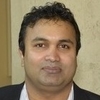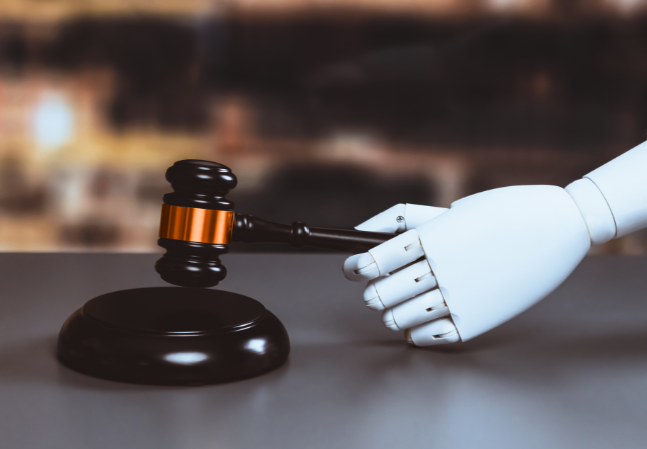Welcome! Save 30% on all CLE, CPE, and Professional Skills webinars, plus 15% off any annual pass with code HOLIDAY25
About the Course
Introduction
The CLE webinar will guide patent counsel on patenting polymorphs from drafting through patent prosecution and enforcement. The panel will further examine lessons learned from the case law and offer strategies to overcome the potential challenges.
Description
The development of pharmaceutical products for FDA approval in the U.S. is often expensive and unpredictable. Compositions and formulations may evolve and, as developed over time, may be separately patentable over earlier U.S. patent filings and might offer many years of additional patent exclusivity. Crystal forms are generally complicated and unpredictable, which can be determinative when considering obviousness and inherent anticipation. However, such arguments might negatively affect written description support of certain claims.
Different crystal forms may have different physicochemical properties that can be claimed. These elements can impact patentability/validity arguments as well as infringement arguments. For example, characterizing information such as IR, Raman, NMR, X-ray, DSC, density, cell parameters, melting point, color, and intensity in a claim may be considered elements of the claim that will need to be proven to show infringement.
The panel will use three recent cases to discuss the opportunities and challenges presented by claiming polymorphs: Gilead Sciences Inc. v. Apotex Inc., (D. Del. 2021); Amgen Inc. v. Sandoz Inc., (D. N.J.), Judge Shipp of the District Court of New Jersey; and BMS v. Sigmapharm Labs. L.L.C., (Fed. Cir. 2021). They will also reference two crystal patents relating to the Allegra product having claims of particular interest. These decisions and the exemplary Allegra patents are excellent examples of the detail-oriented nature of polymorph U.S. patent applications, their prosecution, and litigation, particularly in the ANDA context.
Crystal forms may require considerations involving balancing the ability to prove validity/patentability against proving infringement in litigation. Think through the pros and cons of the following types of claims, for example:
- Claim(s) that simply refer to the unique crystal form(s)
- Claim(s) having some characterization data that uniquely identifies the crystal form(s)
- Claims drawn to process(es) of making the unique crystal form(s)
Consideration of Section 112(f) means-plus-function claims might also be useful. By using a linking table to a specific active ingredient crystal, the claim could, in the language of 112(f), be construed to cover the corresponding structure, material, or acts described in the specification (i.e., the specific crystal disclosed) and equivalents thereof. 112(f) equivalents would be literal equivalents, not equivalents under the doctrine of equivalents.
Listen as our authoritative panel of patent attorneys examines patenting drug formulations from drafting through patent prosecution and enforcement. The panel will further explore lessons learned from the case law and offer strategies to overcome the potential challenges.
Presented By

Mr. Irving has more than 47 years of experience in the field of IP law. His practice includes due diligence, patent prosecution, reissue and reexamination, patent interferences, and counseling, including prelitigation, Orange Book listings of patents covering FDA-approved drugs, and infringement and validity analysis in the chemical fields, as well as litigation. He has served as lead counsel in many patent interferences.

Mr. Issac is Senior IP Counsel at Bristol Myers Squibb. He has served as in-house counsel for Allergan and Gilead Sciences. Mr. Issac received his Ph. D. in Bioorganic Chemistry from Purdue University and J.D. from Temple University Beasley School of Law.

Ms. Lake has more than 20 years of experience in patent law, and her practice focuses on pharmaceutical patent prosecution, due diligence, and client counseling. Ms. Lake received her J.D. from Notre Dame University and her A.M. in Chemistry from Harvard University.

Ms. O’Brien has more than 20 years of experience representing domestic and foreign clients of all sizes in patent procurement, litigation, and client counseling, with a particular emphasis on chemical, biochemical, and pharmaceutical technologies. Exemplary areas of her technical expertise include polymer chemistry; ceramics; glass; food chemistry; cosmetics; paper products; adhesives; and pharmaceutical products, including new chemical entities and formulations and novel solid forms, including polymorphs, cocrystals, and amorphous forms of compounds.
-
This 90-minute webinar is eligible in most states for 1.5 CLE credits.
-
Live Online
On Demand
Date + Time
- event
Monday, November 4, 2024
- schedule
1:00 p.m. ET./10:00 a.m. PT
- Patenting polymorphs
- Obviousness
- Inherent anticipation
- 112(a) and (b) issues
- Recent decisions and case study
- Proving validity/patentability vs. proving infringement in litigation
- Best practices
The panel will review these and other vital issues:
- How to claim the solid-state crystal form in the composition after formulation
- How to characterize crystal forms by various, suitable, and sufficient experimental parameters, if needed, to distinguish them over other forms known in the art
- Consider including the experimental conditions used to produce the new crystal forms in the specification
- Are there potential technical advantages of the claimed crystal forms?
Unlimited access to premium CLE courses:
- Annual access
- Available live and on-demand
- Best for attorneys and legal professionals
Unlimited access to premium CPE courses.:
- Annual access
- Available live and on-demand
- Best for CPAs and tax professionals
Unlimited access to premium CLE, CPE, Professional Skills and Practice-Ready courses.:
- Annual access
- Available live and on-demand
- Best for legal, accounting, and tax professionals
Unlimited access to Professional Skills and Practice-Ready courses:
- Annual access
- Available on-demand
- Best for new attorneys
Related Courses

Are the Rumors of the AIA Death of Best Mode Greatly Exaggerated?
Thursday, January 22, 2026
1:00 PM E.T.



